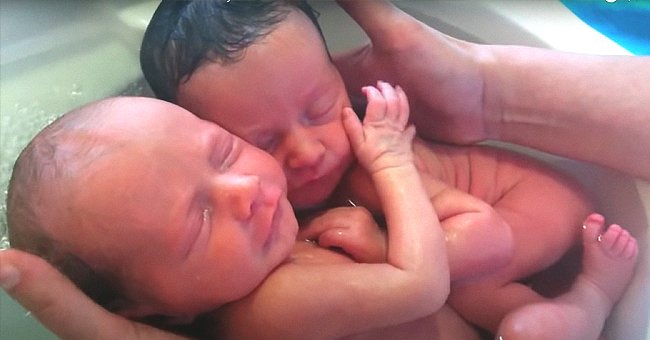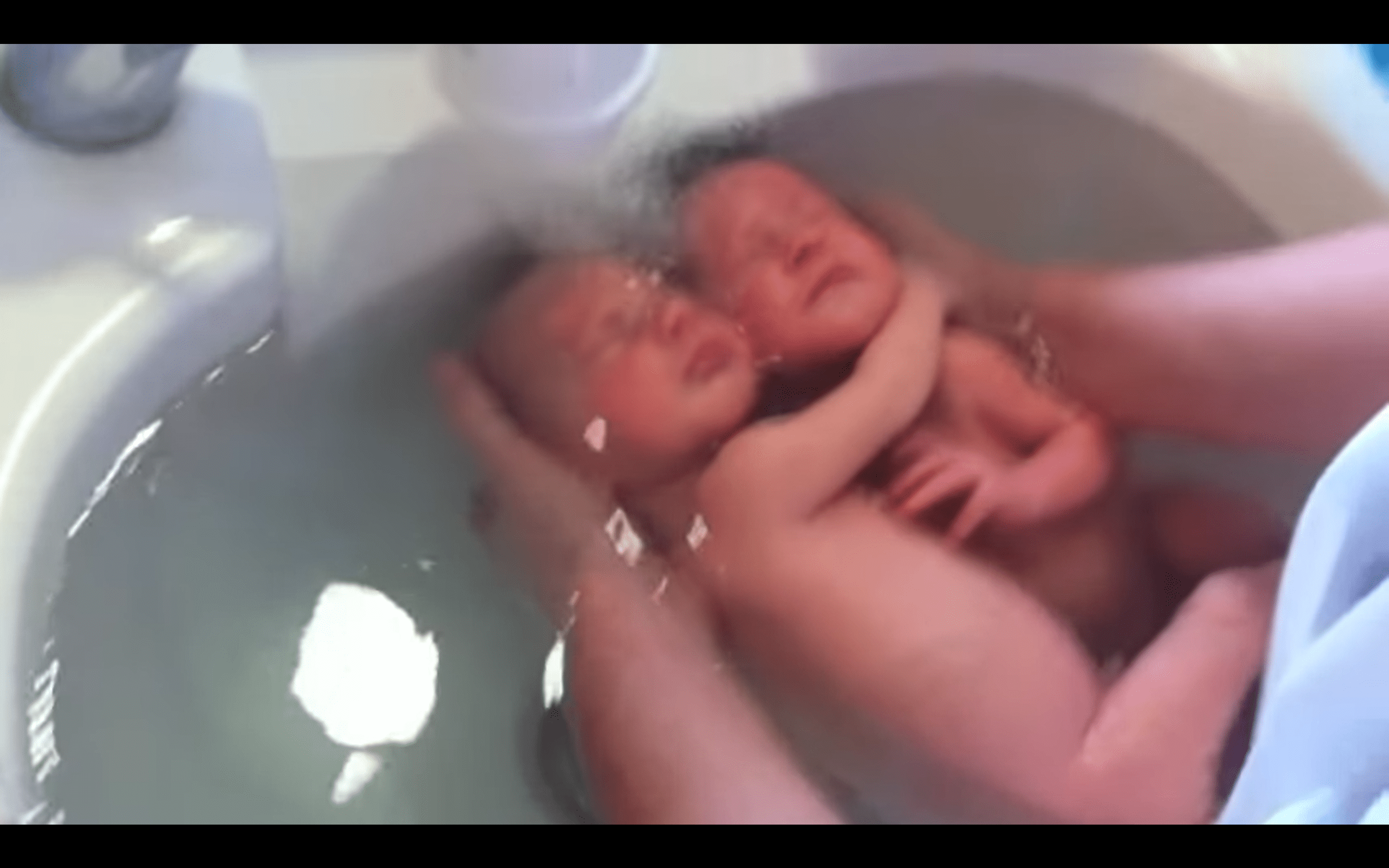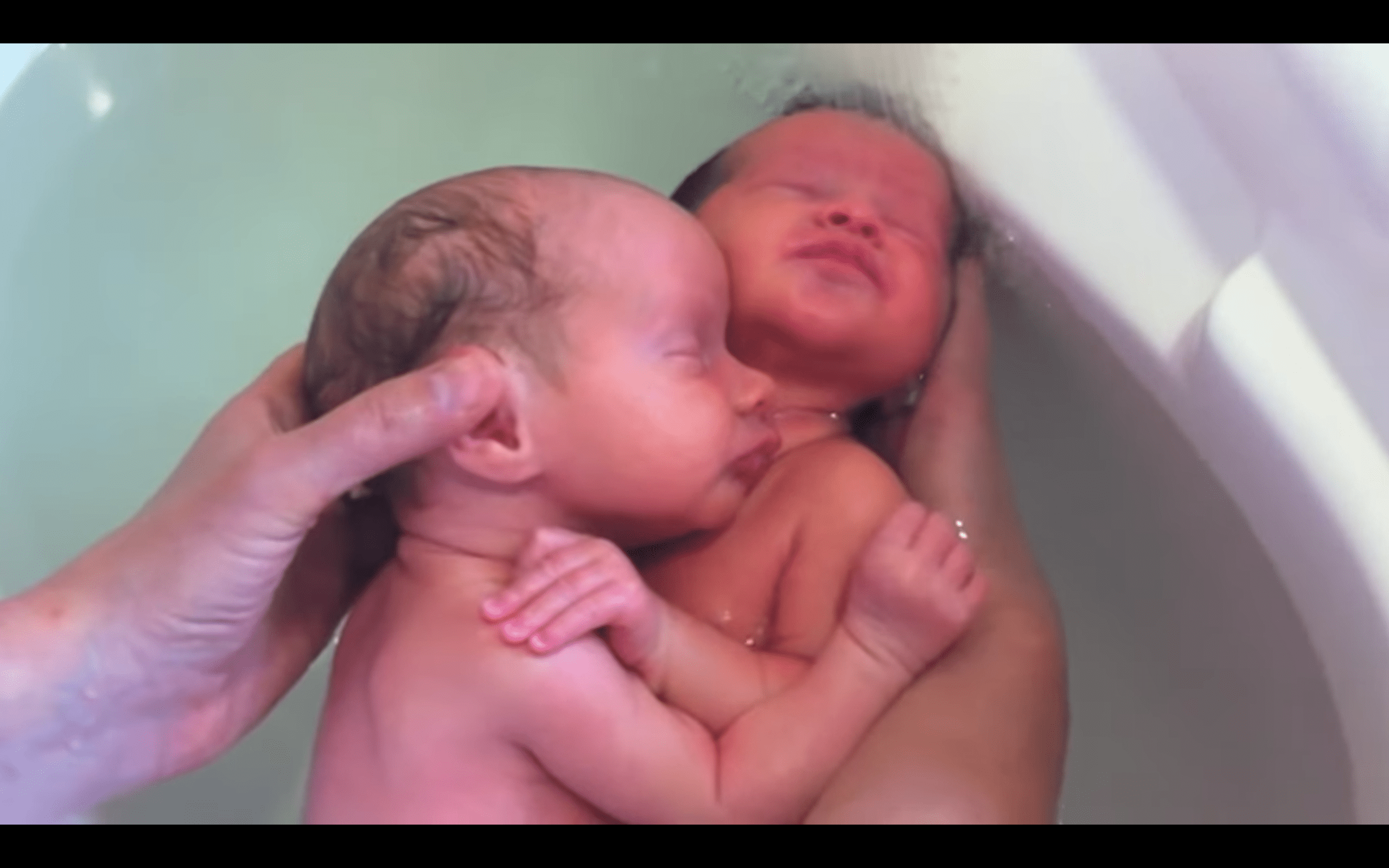
Newborn Twins Won't Stop Cuddling as They Did in the Womb
A nurse shared a cute video on YouTube showing twin babies enjoying a bathing technique she invented, which mimics life inside the womb. Find out more!
They are already born, but they might not know it yet. In 2013, a video of a unique bath offered a fantastic glimpse at what life might look like for twins in the womb, with babies clinging and cuddling each other as if they were in their mom's belly.
In the adorable YouTube video, which has garnered about 50 million views since it was shared, the newborn twins — brother and sister — can be seen clinging to each other while floating in a basin full of water.
A few seconds into the short clip, an adult hand is spotted gently cradling the babies' heads and supporting their tiny bodies. At some point, water is carefully and gently poured over their foreheads and eyes.
At the same time, the twins' mouths and noses remain above the water to enable them to breathe comfortably. The bathing technique is called Thalasso baby bath, and a maternity nurse and grandmother named Sonia Rochel from Paris, France invented it.
Rochel originally designed the bathing technique for babies under two months with the sole purpose of replicating the comfort and relaxation infants felt in their mothers' wombs.
From the awe-inducing viral video, the babies were inseparable. Hence the bathing technique proved effective. However, it is essential to note that this technique is not to be tried at home, but only by a professional, in a healthcare facility.
In another story, a couple, Kelly Graves and her husband, Billy Graves, are certain that their premature son's survival is hinged on the cuddles he receives from his identical twin brother.
Kelly and Billy welcomed their twin boys, Chester and Otis, prematurely at seven months on July 15, 2021. However, weighing one pound, compared to his brother's three pounds and seven ounces, Chester was left fighting for his life.

Twin babies holding on to each other in a video shared by a nurse bathing them. | Photo: youtube.com/massagebebe
Six weeks after they were born, Otis was discharged from the hospital, but Chester remained in the neonatal unit of the Southend Hospital. However, their parents were hopeful that the twin boys would be reunited once more.
Chester's health issues became prominent at his mother's 16-week scan. The doctors revealed to the expectant mother that the twins differed in size by 25 percent due to Selective Intrauterine Growth Restriction.
Kelly was told her son might not make it, but she believed the child was a fighter. At 28 weeks, her water broke, and she welcomed her sons through a C-section.

Twin babies holding on to each other in a video shared by a nurse bathing them. | Photo: youtube.com/massagebebe
Chester barely made it out alive, suffering other terrible health conditions. But as he spent days in the hospital, the child improved, and the family believed cuddles from Otis were helping him fight.
After spending more than two months in the NICU, the brothers finally met for the first time. The family described it as an emotional moment.
They were all focused on getting the brothers back home to reunite with the rest of their siblings. Hopefully, Chester is doing very well now and is enjoying more lovely cuddles from the twin.
The information in this article is not intended or implied to be a substitute for professional medical advice, diagnosis or treatment. All content, including text, and images contained on news.AmoMama.com, or available through news.AmoMama.com is for general information purposes only. news.AmoMama.com does not take responsibility for any action taken as a result of reading this article. Before undertaking any course of treatment please consult with your healthcare provider.
